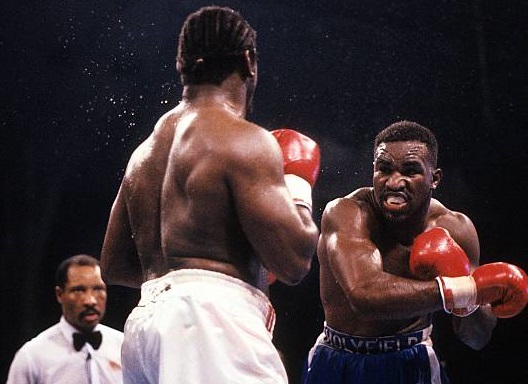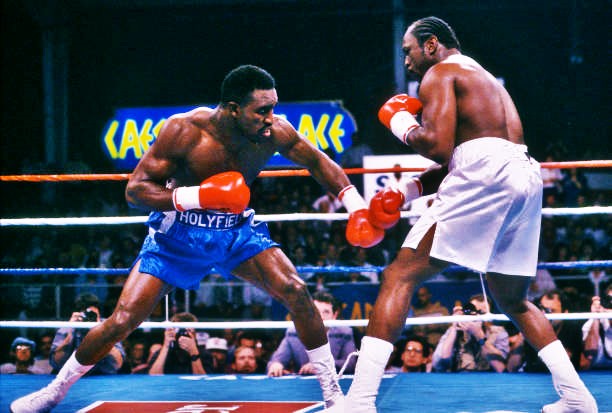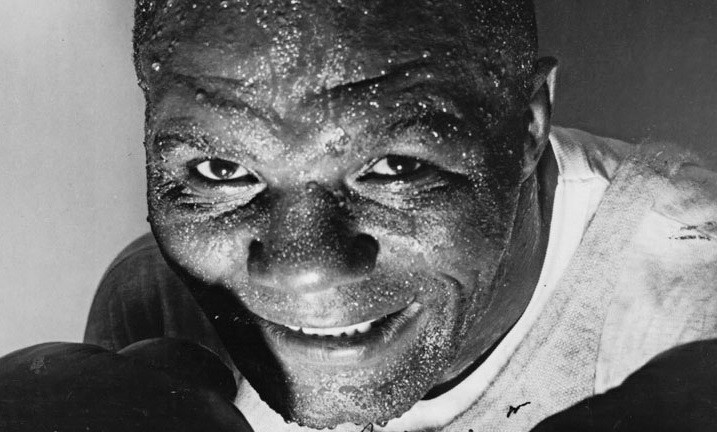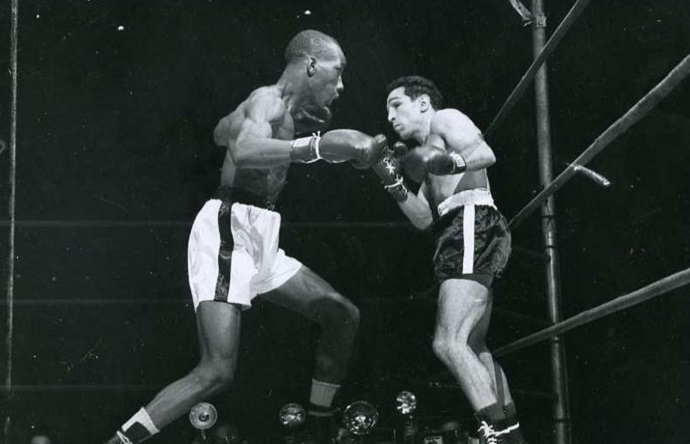March 11, 1989: Holyfield vs Dokes
When Evander Holyfield and Michael Dokes clashed for the WBC Continental Americas Title back in 1989, the result was a battle which some later called the heavyweight fight of the decade. The match demonstrated that Holyfield, whose professional career began at light heavyweight, had the goods to become a legitimate force in the heavyweight division, and that Dokes, who had recently recovered his life (at least temporarily) from its destructive, drug-ridden path, remained a resilient fighter and serious contender. The stylistic contrast of the upstart superstar against the stubborn former champion led to thunderous exchanges that, for ten often hellish rounds, tested and confirmed the mettle of both men.
Six years earlier, Dokes stopped Mike Weaver in a highly controversial bout to become the WBA heavyweight champion. Unfortunately, his reign proved brief: Dokes surrendered his title two fights later against Gerrie Coetzee, and in the intervening years before meeting Holyfield, he struggled with his addictions to cocaine and alcohol, at one point going almost three years between bouts. Meanwhile Holyfield, a bronze medallist at the Los Angeles Olympics, was undefeated and the former cruiserweight world champion. Having moved up to heavyweight, he had already earned victories over James Tillis and Pinklon Thomas. Doubts persisted regarding Holyfield’s ability to battle with bigger, heavier-handed men. Against Dokes, these suspicions quickly evaporated.

It’s not as if concerns regarding Holyfield’s ability to compete at heavyweight were completely unfounded. So obvious in this fight was the physical difference between the two men. Dokes weighed in at 225 pounds to Holyfield’s 208, and the bigger man’s bulky shoulders and back contrasted sharply with Holyfield’s thin waist and lithe physique. This would prove to be a major difference in the bout, although not because it put Holyfield at a disadvantage. Dokes appeared plodding throughout, while his supremely athletic opponent danced and dodged his way around the ring, negating Dokes’ ability to target him with his heavier punches. In order to avoid getting mired in a slugfest, Holyfield knew superior footwork and mobility were key advantages.
Despite Dokes getting off to an energetic start in the first round, a more mobile Holyfield managed to assume control fairly quickly, showcasing his hand speed as he connected with hard overhand rights. As if to confirm his boldness and willingness to get dirty, he retaliated with a blatant low blow after one of Dokes’ punches strayed below the belt.

And, while Dokes demonstrated decent hand speed, he had difficulty cornering Holyfield. Fighting in the center of the ring prevented him from using his superior size to force ‘The Real Deal’ into the direct, heavy-fisted exchanges that might have resulted in a knockout. No doubt in part because of his recent inactivity, Dokes fatigued quickly, and as the fight progressed he began to lean over, a stance that alleviated pressure from his exhausted legs but also undermined his power. Had he been able to put combinations together in the middle rounds, the fight’s narrative might have changed, but even when Dokes mounted an attack the more agile Holyfield slipped away.

By the seventh round two things were clear: Holyfield vs Dokes was one of the best heavyweight slugfests anyone had seen in years, and, as Evander continued to land clean shots, Dokes was running out of time. Aware his situation was desperate, the game former champion came on strong in the eighth, throwing effective combinations and asserting his superior size. In this onslaught, his best of the fight, Dokes pushed Holyfield back against the ropes, leaning on the smaller man, tactics he should have employed from the outset. But whatever change in pace he managed to establish was fleeting, since Dokes was inevitably betrayed by his own fatigue. He simply could not maintain the pace and whatever damage Holyfield incurred was forgotten by the beginning of the ninth.
Dokes was now visibly taxed, lead-footed and unable to throw the combinations necessary to win. It was simply a matter of time before his waning defense was exploited by the still-nimble Holyfield. The smaller man put to rest any questions as to whether he had the power to compete with legitimate heavyweights as midway through the tenth he landed what would be the fight’s climactic punch, a left uppercut on the chin. Dokes wobbled and the ensuing flurry would be the last, since he was clearly too dazed to protect himself. Limp-armed and bent over as though studying the canvas, he stumbled back to the ropes, defenseless. Richard Steele wisely intervened, giving Holyfield his twenty-first professional win and third as a heavyweight.

The victory bolstered Evander Holyfield’s heavyweight credentials and “Real Deal” would go on to become one of the division’s premier fighters in the 1990s and its only four-time champion. Dokes, meanwhile, used this fight as proof he was still a genuine contender, winning his next four bouts before being knocked out by Razor Ruddock in 1990, a loss that finished him as a legitimate title threat. While Holyfield’s and Dokes’ careers diverged after their 1989 meeting—the professional trajectories of each man are marked by the oscillations that befall almost every fighter—their clash remains a premiere heavyweight slugfest, and a career highlight for both. – Eliott McCormick







